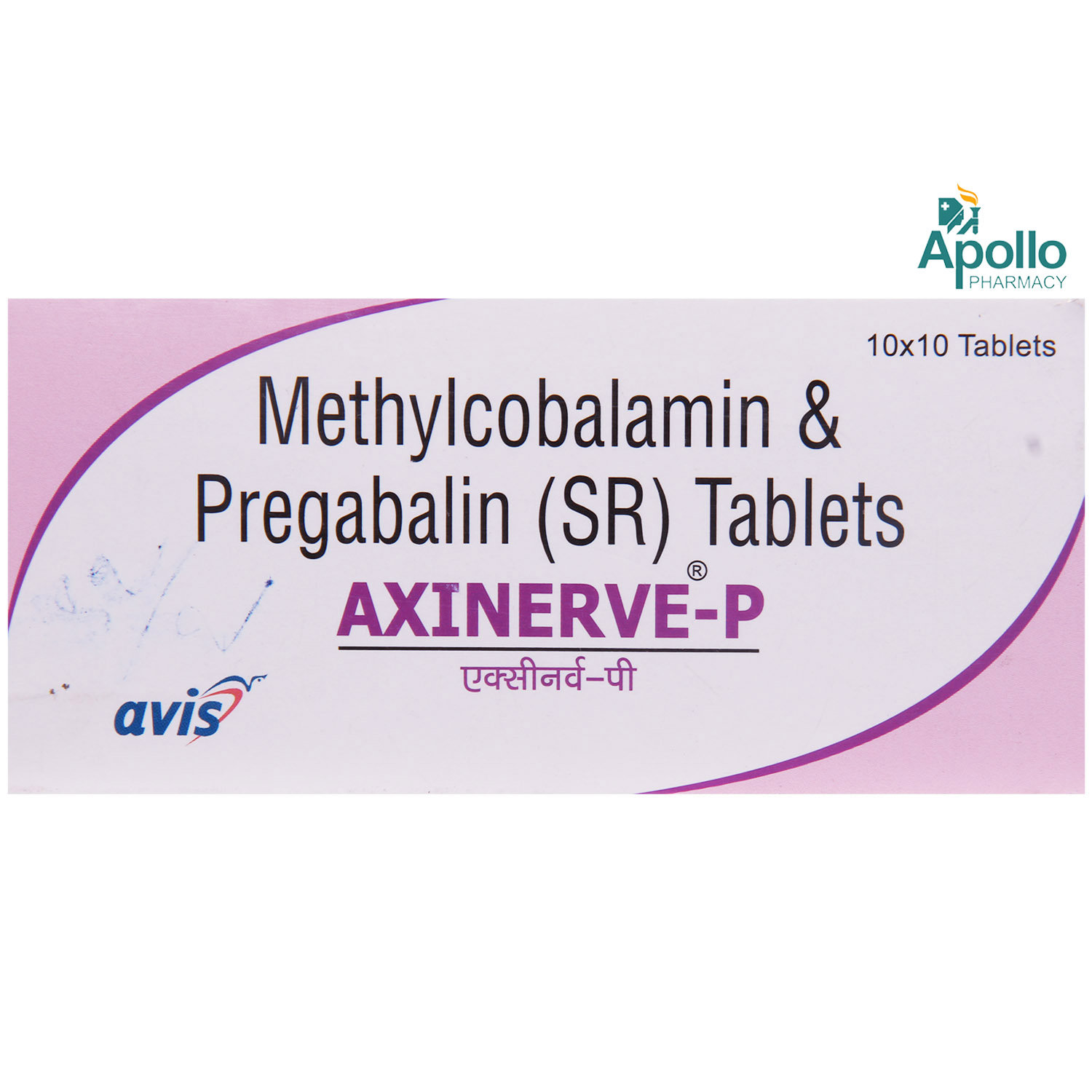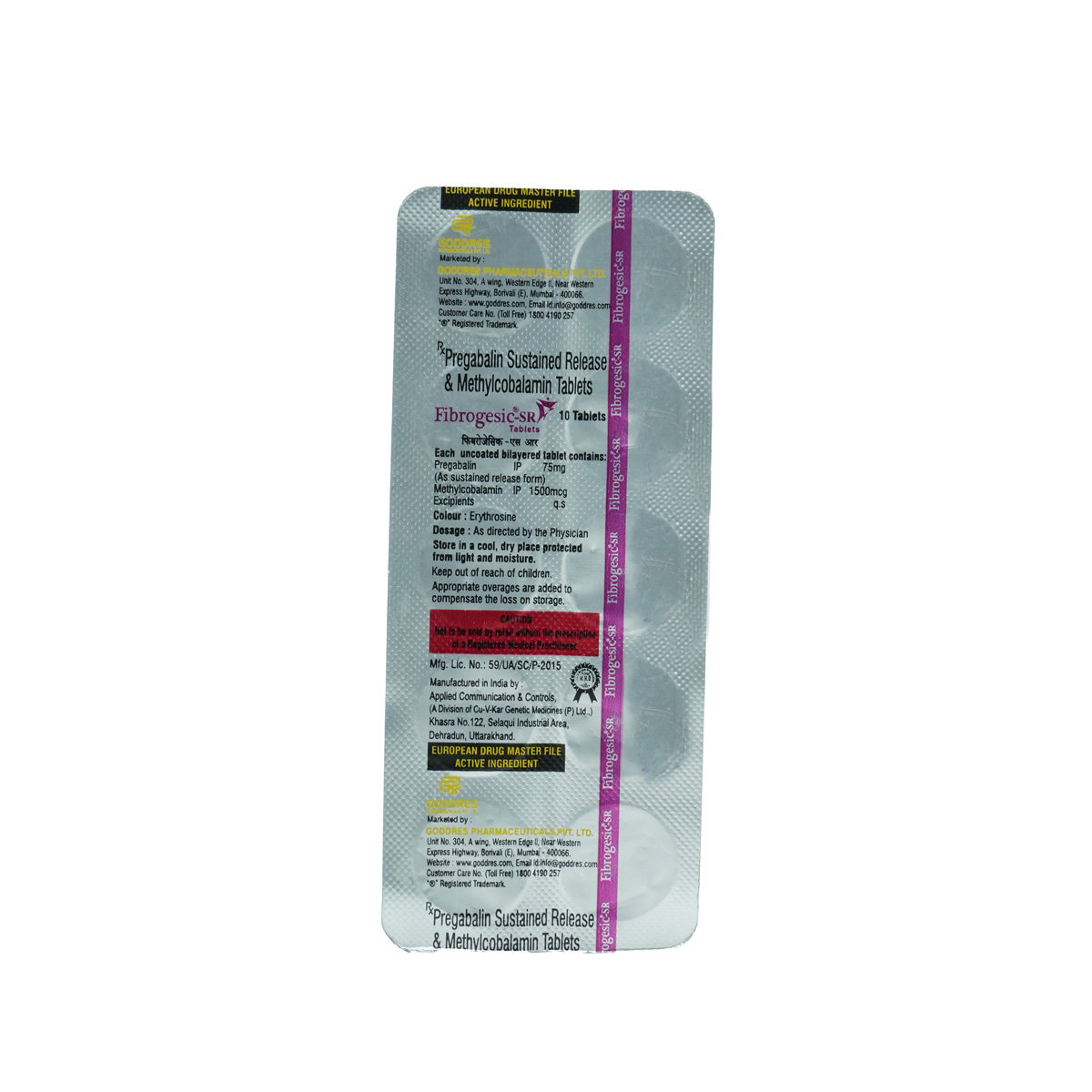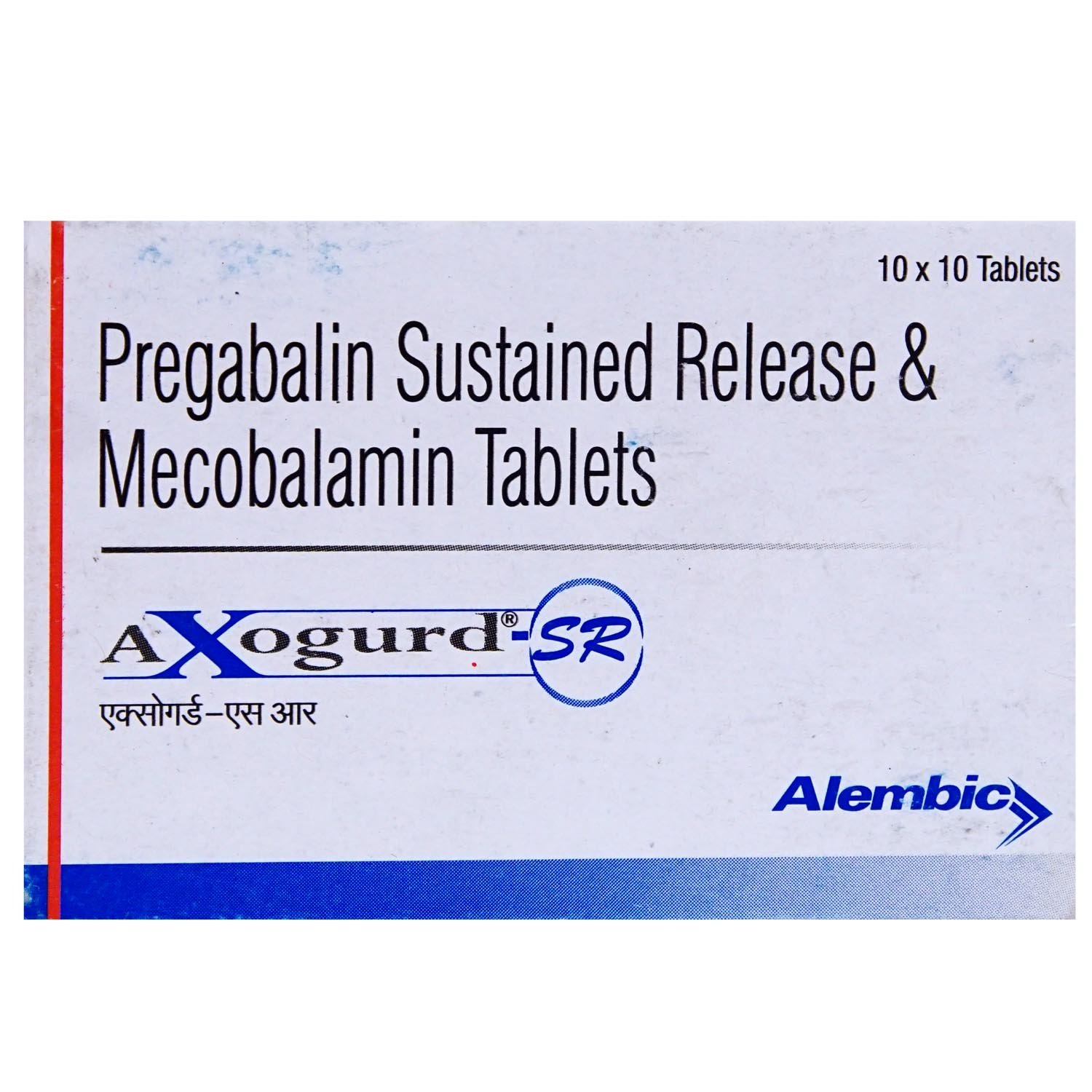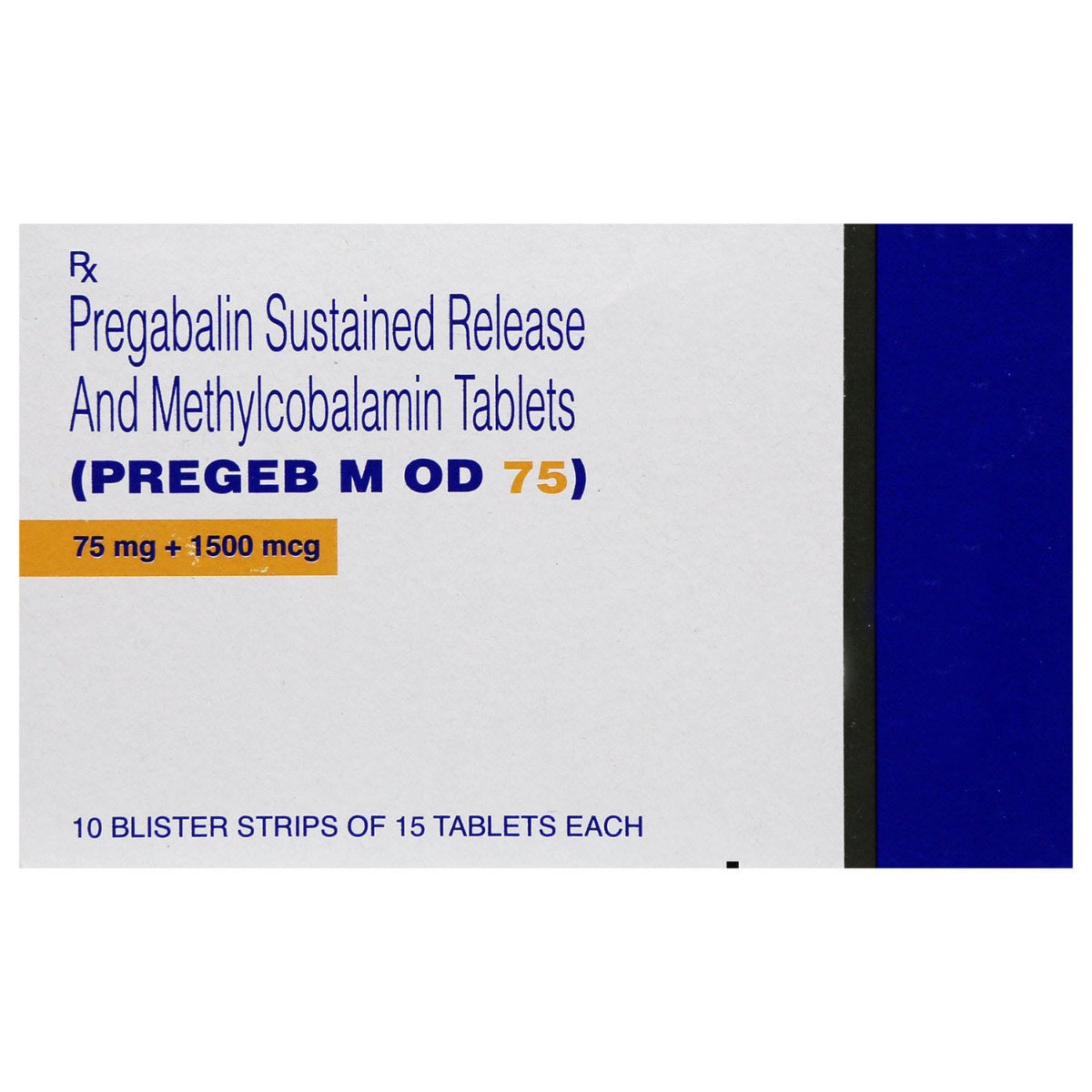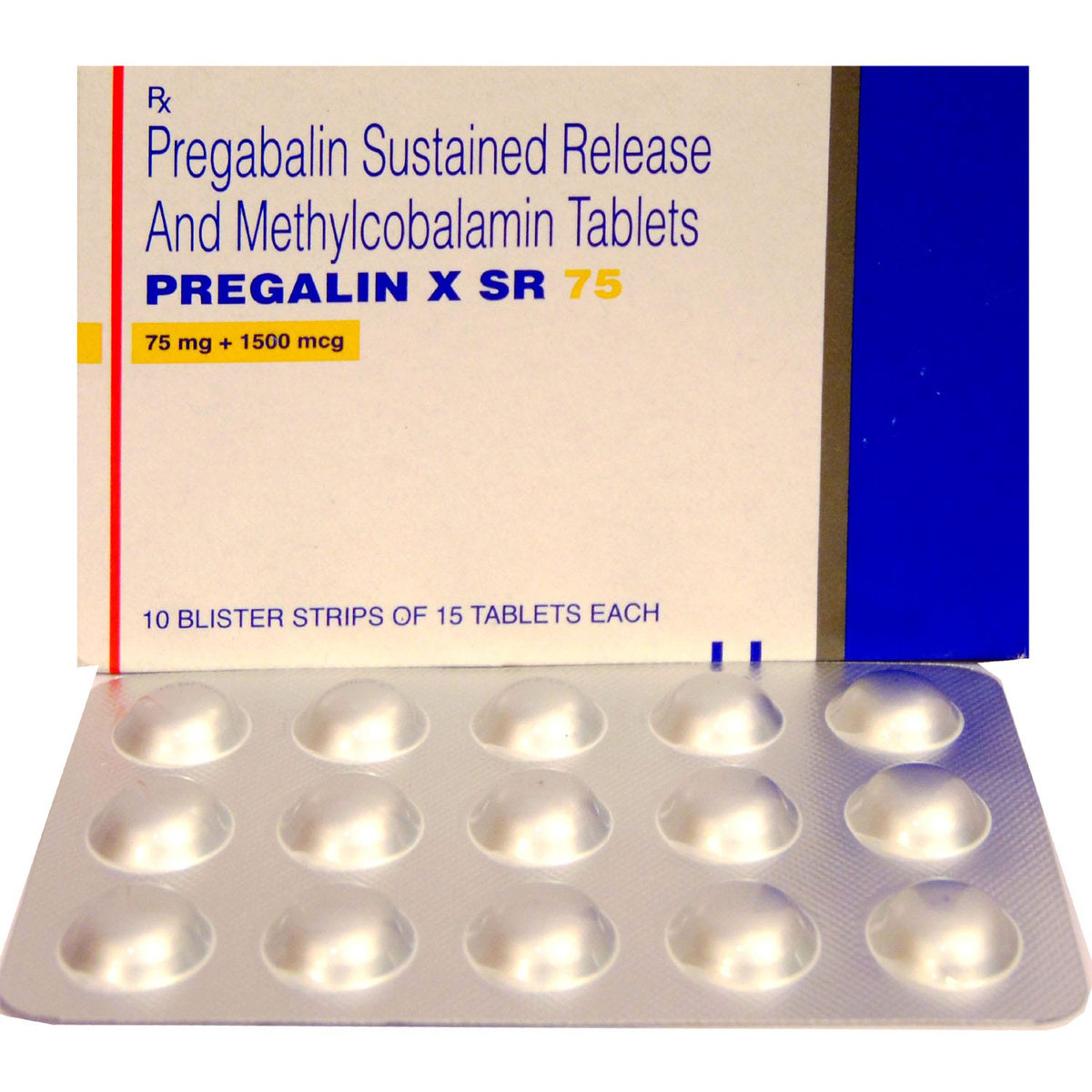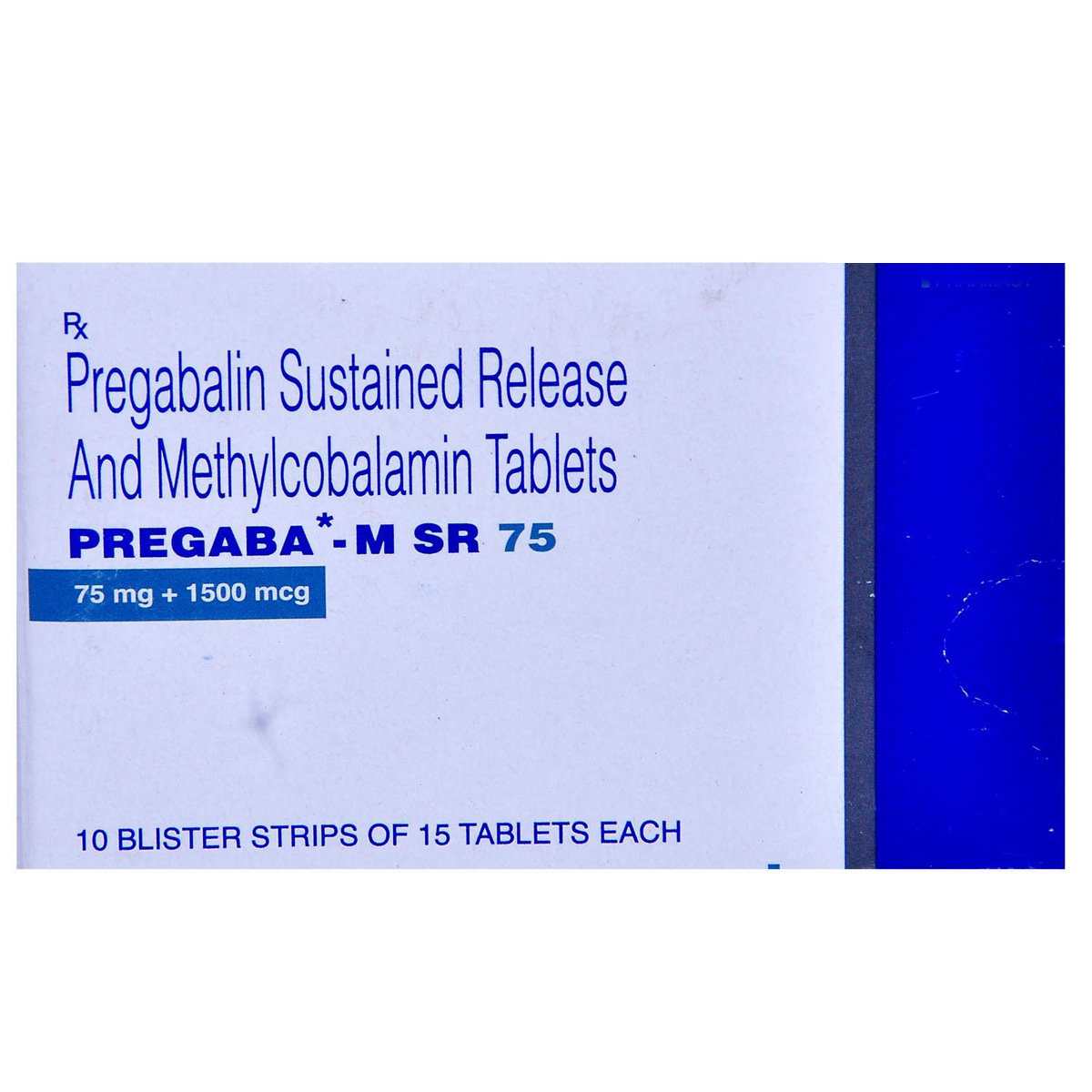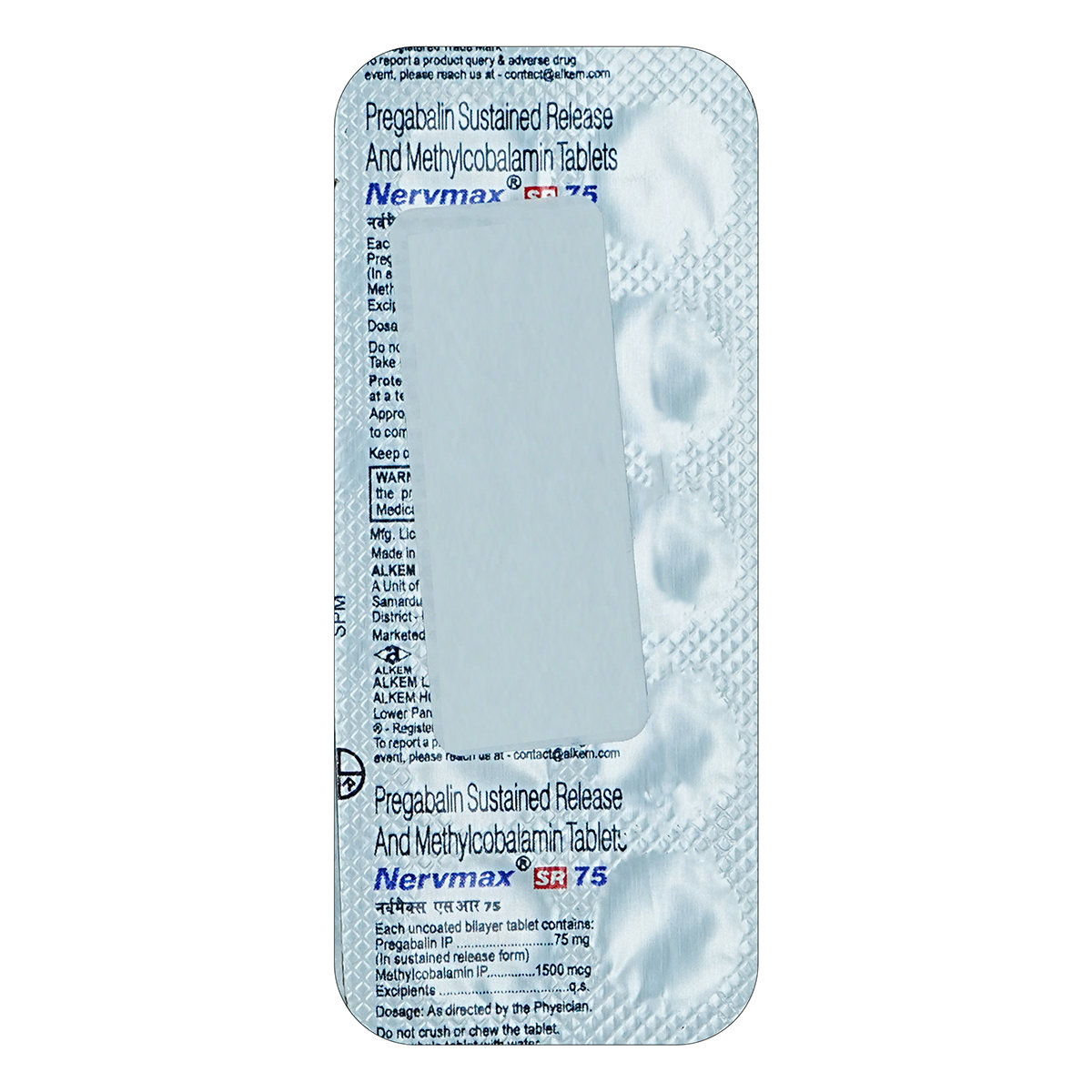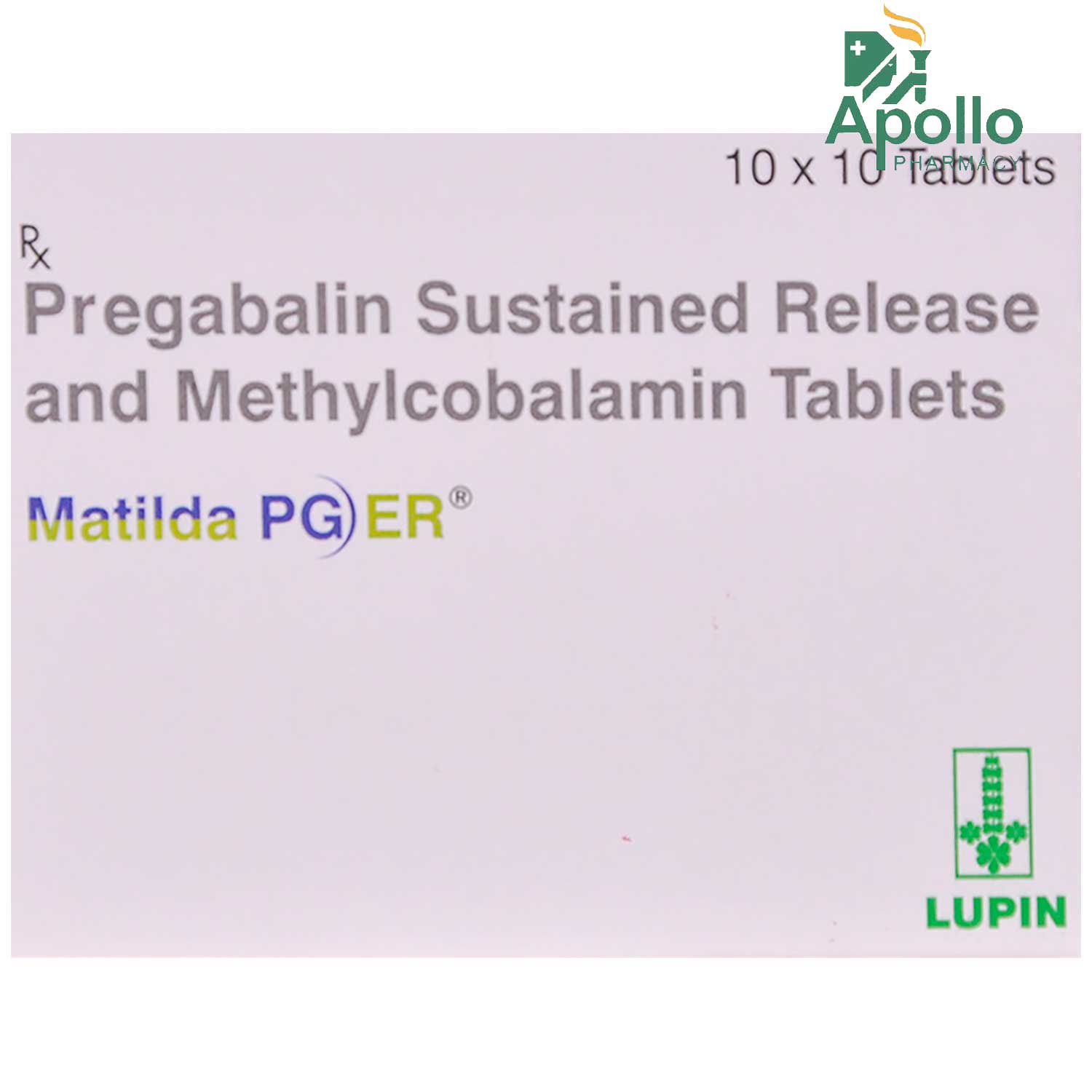Pregarol-M Tablet 10's


MRP ₹163.5
(Inclusive of all Taxes)
₹24.5 Cashback (15%)
Provide Delivery Location
Online payment accepted
 Prescription drug
Prescription drugWhats That
Composition :
Manufacturer/Marketer :
Consume Type :
Return Policy :
Expires on or after :
About Pregarol-M Tablet
Pregarol-M Tablet belongs to the class of medications ‘anticonvulsants’ used in the treatment of neuropathic pain. Neuropathic pain is a chronic (long-term) progressive nerve disease that causes nerve pain due to nerve damage or the nervous system's malfunctioning. It is mostly seen in patients who had suffered a trauma or nerve injury, diabetes, vitamin deficiencies, cancer, multiple sclerosis (disease of the brain and spinal cord), shingles (a viral infection), and HIV.
Pregarol-M Tablet is a combination of two medicines: Pregabalin and Methylcobalamin. Pregabalin acts by decreasing the pain signals sent by a damaged nerve in the body. On the other hand, Methylcobalamin helps rejuvenate and protect damaged nerve cells by producing a substance called myelin (outer protective layer of nerve cell - neuron).
You should take this medicine as prescribed by your doctor. The common side-effects of Pregarol-M Tablet are dizziness, drowsiness, headache, anorexia (loss of appetite), nausea or vomiting, diarrhea, headache, hot sensation (burning pain), vision problems, and diaphoresis (sweating). Inform your doctor if any of these side effects persist.
Do not take Pregarol-M Tablet if you are allergic to ‘Pregabalin’ and ‘Methylcobalamin’ or any contents before taking Pregarol-M Tablet if you have a history of heart diseases, liver or kidney disease, alcoholism, or drug abuse. It should not be used in children and adolescents below 18 years. Inform your doctor if you are pregnant and breastfeeding. Do not drive or operate heavy machinery as Pregarol-M Tablet may cause dizziness or drowsiness. Pregarol-M Tablet contains lactose, so inform your doctor if you have any intolerance to sugars. Do not discontinue treatment without telling your doctor.
Uses of Pregarol-M Tablet
Directions for Use
Medicinal Benefits
Pregarol-M Tablet is a combination of two drugs: Pregabalin and Methylcobalamin. Pregabalin is an anticonvulsant that affects the brain's chemicals that send pain signals across the nervous system. It works by binding to the specific site on voltage-gated calcium channels (responsible for excitatory response), thereby decreasing brain activity. This effect helps in relieving nerve pain and lowers the risk of seizures. On the other hand, Methylcobalamin is a form of vitamin B12 that helps rejuvenate and protect damaged nerve cells by producing a substance called myelin (outer protective layer of nerve cells). Together, Pregarol-M Tablet helps in providing relief from neuropathic pain and improved nerve signal conduction.
Storage
- Inform your doctor about dizziness symptoms. They may adjust your medication regimen or prescribe additional medications to manage symptoms.
- Follow your doctor's instructions for taking medication, and take it at the same time every day to minimize dizziness.
- When standing up, do so slowly and carefully to avoid sudden dizziness.
- Avoid making sudden movements, such as turning or bending quickly, which can exacerbate dizziness.
- Drink plenty of water throughout the day to stay hydrated and help alleviate dizziness symptoms.
- If you're feeling dizzy, sit or lie down and rest until the dizziness passes.
- Track when dizziness occurs and any factors that may trigger it, and share this information with your doctor to help manage symptoms.
- Avoid driving or operating machinery or activities that require high focus until you know how the medication affects you.
- Maintain a fixed sleeping schedule, create a relaxing bedtime routine and ensure your sleeping space is comfortable to maximize your sleep quality.
- Limit alcohol and caffeine as these may worsen drowsiness and disturb sleep patterns.
- Drink plenty of water as it helps with alertness and keeps you hydrated and for overall well-being.
- Moderate physical activity can improve energy levels, but avoid intense workouts right before bedtime.
- Hydrate your body: Drink enough water to prevent dehydration and headaches.
- Calm Your Mind: Deep breathing and meditation can help you relax and relieve stress.
- Rest and Recharge: Sleep for 7-8 hours to reduce headache triggers.
- Take rest: lie down in a quiet, dark environment.
- Cold or warm compresses can help reduce tension.
- Stay Upright: Maintain good posture to keep symptoms from getting worse.
- To treat headaches naturally, try acupuncture or massage therapy.
- Over-the-counter pain relievers include acetaminophen and ibuprofen.
- Prescription Assistance: Speak with your doctor about more substantial drug alternatives.
- Severe Headaches: Seek emergency medical assistance for sudden, severe headaches.
- Frequent Headaches: If you get reoccurring headaches, consult your doctor.
- Headaches with Symptoms: Seek medical attention if your headaches include fever, disorientation, or weakness.
- Rest well; get enough sleep.
- Eat a balanced diet and drink enough water.
- Manage stress with yoga and meditation.
- Limit alcohol and caffeine.
- Physical activities like walking or jogging might help boost energy and make you feel less tired.
- Wear compression garments like stockings, sleeves, or gloves to apply pressure and help stop fluid from building up, especially after the swelling goes down.
- Move around and do exercises to help the fluid circulate, especially in swollen limbs. Ask your doctor for specific exercises.
- Raise the swollen area above your heart level several times a day, even while sleeping, to help reduce swelling.
- Gently massage the swollen area with firm but not painful pressure.
- Keep the swollen area clean and moisturized to prevent injury and infection.
- Reduce salt intake to help prevent fluid from building up and worsening the swelling, as advised by a doctor.
- If the swelling does not get better after a few days of home treatment or worsens, consult your doctor right away.
- Inform your doctor about the nausea and discuss possible alternatives to the medication or adjustments to the dosage.
- Divide your daily food intake into smaller, more frequent meals to reduce nausea.
- Opt for bland, easily digestible foods like crackers, toast, plain rice, bananas, and applesauce.
- Avoid certain foods that can trigger nausea, such as fatty, greasy, spicy, and smelly foods.
- Drink plenty of fluids, such as water, clear broth, or electrolyte-rich beverages like coconut water or sports drinks.
- Use ginger (tea, ale, or candies) to help relieve nausea.
- Get adequate rest and also avoid strenuous activities that can worsen nausea.
- Talk to your doctor about taking anti-nausea medication if your nausea is severe.
- Record when your nausea occurs, what triggers it, and what provides relief to help you identify patterns and manage your symptoms more effectively.
Drug Warnings
Pregarol-M Tablet may increase the risk of heart failure in patients with heart diseases. It may cause dizziness and somnolence (sleepiness). So, it might increase the risk of accidental injury in elderly patients. Pregarol-M Tablet may also cause temporary vision problems. However, if this condition is persistent, consult your doctor immediately. Patients with diabetes who gain weight with Pregarol-M Tablet may need a change in diabetic medicines. If you notice decreased urination while taking Pregarol-M Tablet , inform your doctor as Pregarol-M Tablet may cause kidney failure in some cases. It may increase suicidal tendencies, though it is rare. You may experience convulsions after discontinuing Pregarol-M Tablet . In such cases, inform your doctor immediately.
Drug-Drug Interactions
Drug-Drug Interactions
Login/Sign Up
Using Pregarol-M Tablet together with Remifentanil causes central nervous system depression (a physiological state that can result in a decreased rate of breathing, decreased heart rate and loss of consciousness).
How to manage the interaction:
Although taking remifentanil and Pregarol-M Tablet together can result in an interaction, it can be taken if a doctor has prescribed it. However, if you experience impaired judgment, reaction time, and motor coordination, dizziness, sleepiness, and difficulty concentrating, consult the doctor immediately. Do not exceed the doses, frequency, or duration of usage advised by a doctor. Avoid driving or operating dangerous machinery. Do not stop using any medications without talking to a doctor.
Using Pregarol-M Tablet together with Oxycodone causes central nervous system depression (a physiological state that can result in a decreased rate of breathing, decreased heart rate and loss of consciousness).
How to manage the interaction:
Although taking oxycodone and Pregarol-M Tablet together can result in an interaction, it can be taken if a doctor has prescribed it. However, if you experience impaired judgment, reaction time, and motor coordination, dizziness, sleepiness, and difficulty concentrating, consult the doctor immediately. Do not exceed the doses, frequency, or duration of usage advised by a doctor. Avoid driving or operating dangerous machinery. Do not stop using any medications without talking to a doctor.
Using Pregarol-M Tablet together with Codeine may cause central nervous system depression (a physiological state that can result in a decreased rate of breathing, decreased heart rate, and loss of consciousness).
How to manage the interaction:
Although taking Codeine and Pregarol-M Tablet together can result in an interaction, it can be taken if a doctor has prescribed it. However, if you experience impaired judgment, reaction time, and motor coordination, dizziness, sleepiness, and difficulty concentrating, consult the doctor immediately. Do not exceed the doses, frequency, or duration of usage advised by a doctor. Avoid driving or operating dangerous machinery. Do not stop using any medications without talking to a doctor.
Using Pregarol-M Tablet together with Methadone causes central nervous system depression (a physiological state that can result in a decreased rate of breathing, decreased heart rate, and loss of consciousness).
How to manage the interaction:
Although taking methadone and Pregarol-M Tablet together can result in an interaction, it can be taken if a doctor has prescribed it. However, if you experience impaired judgment, reaction time, and motor coordination, dizziness, sleepiness, and difficulty concentrating, consult the doctor immediately. Do not exceed the doses, frequency, or duration of usage advised by a doctor. Avoid driving or operating dangerous machinery. Do not stop using any medications without talking to a doctor.
Using Pregarol-M Tablet together with Dezocine causes central nervous system depression (a physiological state that can result in a decreased rate of breathing, decreased heart rate and loss of consciousness).
How to manage the interaction:
Although taking Dezocine and Pregarol-M Tablet together can result in an interaction, it can be taken if a doctor has prescribed it. However, if you experience impaired judgment, reaction time, and motor coordination, dizziness, sleepiness, and difficulty concentrating, consult the doctor immediately. Do not exceed the doses, frequency, or duration of usage advised by a doctor. Avoid driving or operating dangerous machinery. Do not stop using any medications without talking to a doctor.
When Pregarol-M Tablet and Esketamine are taken together, it may increase the risk of side effects.
How to manage the interaction:
Although taking Pregarol-M Tablet and Esketamine together can result in an interaction, it can be taken if a doctor has prescribed it. However, if you experience symptoms such as drowsiness, confusion, difficulty concentrating, and impairment in thinking, judgment, reaction speed, and motor coordination. Do not exceed the doses, frequency, or duration of usage advised by a doctor. Avoid driving or operating dangerous machinery. Do not stop using any medications without talking to a doctor.
Using Pregarol-M Tablet together with Pentazocine causes central nervous system depression (a physiological state that can result in a decreased rate of breathing, decreased heart rate and loss of consciousness).
How to manage the interaction:
Although taking pentazocine and Pregarol-M Tablet together can result in an interaction, it can be taken if a doctor has prescribed it. However, if you experience impaired judgment, reaction time, and motor coordination, dizziness, sleepiness, and difficulty concentrating, consult the doctor immediately. Do not exceed the doses, frequency, or duration of usage advised by a doctor. Avoid driving or operating dangerous machinery. Do not stop using any medications without talking to a doctor.
Using Pregarol-M Tablet together with Sufentanil causes central nervous system depression (a physiological state that can result in a decreased rate of breathing, decreased heart rate and loss of consciousness).
How to manage the interaction:
Although taking sufentanil and Pregarol-M Tablet together can result in an interaction, it can be taken if a doctor has prescribed it. However, if you experience impaired judgment, reaction time, and motor coordination, dizziness, sleepiness, and difficulty concentrating, consult the doctor immediately. Do not exceed the doses, frequency, or duration of usage advised by a doctor. Avoid driving or operating dangerous machinery. Do not stop using any medications without talking to a doctor.
Using Pregarol-M Tablet together with Alfentanil causes central nervous system depression (a physiological state that can result in a decreased rate of breathing, decreased heart rate and loss of consciousness).
How to manage the interaction:
Although taking Pregarol-M Tablet and Alfentanil together can cause an interaction, it can be taken if a doctor has suggested it. However, if you experience dizziness, drowsiness, difficulty concentrating, and impairment in- judgment, reaction speed and motor coordination, consult the doctor immediately. Avoid driving or operating dangerous machinery. Do not exceed the doses, frequency, or duration of usage advised by the doctor. Do not discontinue any medications without consulting a doctor.
Using Pregarol-M Tablet together with Fentanyl can increase the risk of side effects.
How to manage the interaction:
Although taking fentanyl together with Pregarol-M Tablet can result in an interaction, they can be taken together if prescribed by a doctor. However, consult a doctor if you have dizziness, sleepiness, difficulty concentrating, or impairment in judgment. Do not stop taking any medication without consulting a doctor.
Drug-Food Interactions
Drug-Food Interactions
Login/Sign Up
Diet & Lifestyle Advise
- Include food rich in vitamin B and D in your diet.
- Include cayenne pepper in your diet as it can help in lowering neuropathic pain.
- Exercising regularly helps in improving overall health and combating pain.
- Rest well, get plenty of sleep.
- Try taking a warm bath as it can be soothing.
- Avoid smoking and alcohol consumption.
- Meditation and yoga can help lower stress, decrease pain sensitivity, and improves coping skills.
- Acupuncture can be helpful by stimulating pressure points.
- Using essential oils for massages can help increase circulation.
Side Effects of Pregarol-M Tablet
- Dizziness
- Drowsiness
- Headache
- Anorexia (loss of appetite)
- Nausea or vomiting
- Diarrhea
- Headache
- Sore throat
- Vision problems
- Hot sensation (burning pain)
- Diaphoresis (sweating)
- Weight gain
Habit Forming
Therapeutic Class
Product Substitutes
Drug-Diseases Interactions
Drug-Diseases Interactions
Login/Sign Up
FAQs
Pregarol-M Tablet is a combination of two medicines: Pregabalin and Methylcobalamin. Pregarol-M Tablet block the brain's pain signals and protect nerve cells from further damage, thereby improving nerve signal conduction to the whole body parts. These effects help to reduce pain in patients with neuropathic pain.
Pregarol-M Tablet should not be given to children and adolescents under the age of 18 years as it may increase suicidal thoughts.
Pregarol-M Tablet should not be stopped abruptly as it may cause withdrawal reactions such as trouble sleeping, headache, nausea, feeling anxious, diarrhea, flu-like symptoms, convulsions, nervousness, depression, pain, sweating, and dizziness. Pregarol-M Tablet should be stopped gradually over a minimum of 1 week.
Pregarol-M Tablet can be used in patients with diabetes if they have neuropathic pain. However, inform your doctor if you notice any weight gain while using Pregarol-M Tablet . Your doctor may change your diabetic medicines to stop weight gain. Also, take some measures to control weight such as eating a balanced diet and exercising regularly.
Pregarol-M Tablet may cause drowsiness. So, it is advised to refrain from activities such as driving or operating heavy machinery if you feel sleepy after taking Pregarol-M Tablet .
You may notice pain improvement within 2-3 days after taking Pregarol-M Tablet . However, it may take 2-3 months for your symptoms to improve depending on your health condition.
Drug-Drug Interactions Checker List
- OXYCODONE
- LORAZEPAM
- OMEPRAZOLE
- COLCHICINE
- NEOMYCIN
Special Advise
- Pregarol-M Tablet may increase suicidal thoughts. Extreme caution is advised with people suffering from suicidal tendencies or psychological problems.
- Pregarol-M Tablet is known to cause dizziness and sleepiness, so it is advised to refrain from driving or doing any work that requires attention or concentration.
Disease/Condition Glossary
Neuropathic pain: Neuropathic pain is caused due to damage to sensory nerves. It is caused by chronic progressive nerve disease, infection, or injury. The pain could be intermittent or continuous, which is felt as a prickling, stabbing, tingling, or burning sensation. A feeling of numbness and loss of sense is also a common symptom of neuropathic pain. Usually, the body sends the pain signals when there is an injury, but with neuropathic pain, the pain is not triggered by an injury, the body unpromptedly sends the pain signals. Symptoms include spontaneous, untriggered pain, unpleasant feeling, shooting, burning or stabbing pain, difficulty resting or sleeping, and evoked pain (pain caused by events usually not painful).

Have a query?
Buy best C.n.s Drugs products by
Intas Pharmaceuticals Ltd
Sun Pharmaceutical Industries Ltd
Torrent Pharmaceuticals Ltd
Alkem Laboratories Ltd
Abbott India Ltd
Cipla Ltd
Alteus Biogenics Pvt Ltd
Micro Labs Ltd
Lupin Ltd
Ipca Laboratories Ltd
D D Pharmaceuticals Pvt Ltd
Icon Life Sciences
Mankind Pharma Pvt Ltd
Tripada Healthcare Pvt Ltd
Arinna Lifesciences Ltd
Linux Laboratories Pvt Ltd
East West Pharma India Pvt Ltd
La Renon Healthcare Pvt Ltd
Talent India Pvt Ltd
Tas Med India Pvt Ltd
Zydus Healthcare Ltd
Cnx Health Care Pvt Ltd
Eris Life Sciences Ltd
Leeford Healthcare Ltd
Emcure Pharmaceuticals Ltd
Macleods Pharmaceuticals Ltd
Sigmund Promedica
Aristo Pharmaceuticals Pvt Ltd
Dr Reddy's Laboratories Ltd
Troikaa Pharmaceuticals Ltd
Consern Pharma Ltd
Zydus Cadila
Shine Pharmaceuticals Ltd
Wockhardt Ltd
Ardent Life Sciences Pvt Ltd
Crescent Formulations Pvt Ltd
Theo Pharma Pvt Ltd
Reliance Formulation Pvt Ltd
Ikon Pharmaceuticals Pvt Ltd
Propel Healthcare
Neon Laboratories Ltd
Jagsam Pharma
Msn Laboratories Pvt Ltd
Morepen Laboratories Ltd
Pulse Pharmaceuticals
Sanofi India Ltd
Med Manor Organics Pvt Ltd
Hetero Healthcare Pvt Ltd
Novartis India Ltd
Crescent Therapeutics Ltd
Elder Pharmaceuticals Ltd
Solvate Laboratories Pvt Ltd
Akumentis Healthcare Ltd
Mova Pharmaceutical Pvt Ltd
Psyco Remedies Ltd
Tripada Lifecare Pvt Ltd
Ajanta Pharma Ltd
Cyrus Remedies Pvt Ltd
Medishri Healthcare Pvt Ltd
Cadila Healthcare Ltd
Glenmark Pharmaceuticals Ltd
Matteo Health Care Pvt Ltd
Hbc Life Sciences Pvt Ltd
Lyf Healthcare
Matias Healthcare Pvt Ltd
Mesmer Pharmaceuticals
Alembic Pharmaceuticals Ltd
Capital Pharma
Crescent Pharmaceuticals
Medopharm Pvt Ltd
Alniche Life Sciences Pvt Ltd
Kivi Labs Ltd
Talin Remedies Pvt Ltd
USV Pvt Ltd
Quince Lifesciences Pvt Ltd
Solis Pharmaceuticals
Infivis Life Care
Zuventus Healthcare Ltd
Cadila Pharmaceuticals Ltd
Pfizer Ltd
Wallace Pharmaceuticals Pvt Ltd
A N Pharmacia Laboratories Pvt Ltd
Blue Cross Laboratories Pvt Ltd
Jenburkt Pharmaceuticals Ltd
Lia Life Sciences Pvt Ltd
Mano Pharma
Medley Pharmaceuticals Ltd
Primus Remedies Pvt Ltd
FDC Ltd
Maneesh Pharmaceuticals Ltd
Apex Laboratories Pvt Ltd
Gagnant Healthcare Pvt Ltd
Ozone Pharmaceuticals Ltd
RPG Life Sciences Ltd
Strides Shasun Ltd
Unichem International
GlaxoSmithKline Pharmaceuticals Ltd
Kuresys Labs Pvt Ltd
LA Pharma
Trion Pharma India Llp
Alcohol
Caution
Alcohol may worsen the condition by increasing the risk of side-effects.
Pregnancy
Unsafe
Pregarol-M Tablet is a category C medicine. It is not recommended for use in pregnant women unless the doctor thinks the benefits outweigh the risks.
Breast Feeding
Caution
Pregarol-M Tablet should be used with caution in breastfeeding mothers unless the doctor thinks the benefits outweigh the risks.
Driving
Caution
Pregarol-M Tablet may cause dizziness and drowsiness. So, avoid driving or operating heavy machinery while using Pregarol-M Tablet .
Liver
Caution
Pregarol-M Tablet should be used with caution in patients with liver diseases. Dose adjustments may be necessary.
Kidney
Caution
Pregarol-M Tablet should be used with caution in patients with kidney diseases. Dose adjustments may be necessary
Children
Unsafe
Pregarol-M Tablet is not recommended for anyone below the age of 18 years.



